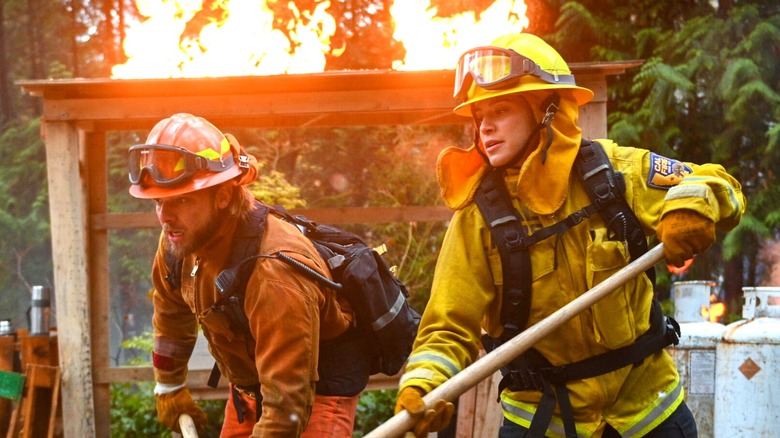The Fire In Fire Country Is Definitely Real (But Not In The Way You Think)
If there's one thing that "Fire Country" fans love, it's countries. If there's a second thing, it's probably series star and co-creator Max Thieriot. But give them a chance to pick a third thing that they love? Bud, you'd better believe that third thing is going to be "fire." Sure, it's technically the villain on the show, but darned if it doesn't bring a seductive je ne sais quoi to the proceedings.
Thieriot, for his part, seems to have a healthy level of respect for his on-screen foil and maintains a respectful working relationship with the concept of combustion. Still, tantamount in maintaining that sort of respect is the establishment of clear workplace boundaries, and for all of fire's many gifts to mankind (see: Safely cooked meat, s'mores, Burning Man) it doesn't often share the set with its co-stars on the hit CBS drama, and when it does? It's hardly the biblical conflagration that you see on TV.
According to Max Thieriot, there's less fire in Fire Country than you think
"It's totally weird," Thieriot told Collider in a recent interview when he was asked how it felt to shoot fire scenes on sets that were notably not on fire. "It's definitely something that takes getting used to because, even in the months that we're allowed to have real flame bars and some real fire, it's never to the scale that you see on the show."
The flame bars that Thieriot was referring to? Those are special effects rigs, usually hooked up to liquid propane and used to create a controlled, sustainable burn for performances. You can learn more about them from SFX experts like J&M Special Effects. When they're being used to shoot episodes of "Fire Country," the production keeps "a visual effects person on set there for all those days," according to Thieriot, "so we try to incorporate them into the conversation and explain it to the actors. They'll say, 'Okay, you're standing there, so this is where the fire's gonna be. That's how big it's gonna be.' That way, you can imagine where it is and know the direction it's moving in."
As for why the show tends to make its bigger fires a problem for post-production, the reason might shock you: From what Thieriot says, this "fire" stuff can get pretty toasty. "When you stand close to any fire, especially the bigger and hotter it is, you cannot stand next to that fire for long without your face feeling like it's melting. It's an unreal heat that you feel. You basically get sunburn. It's crazy."

